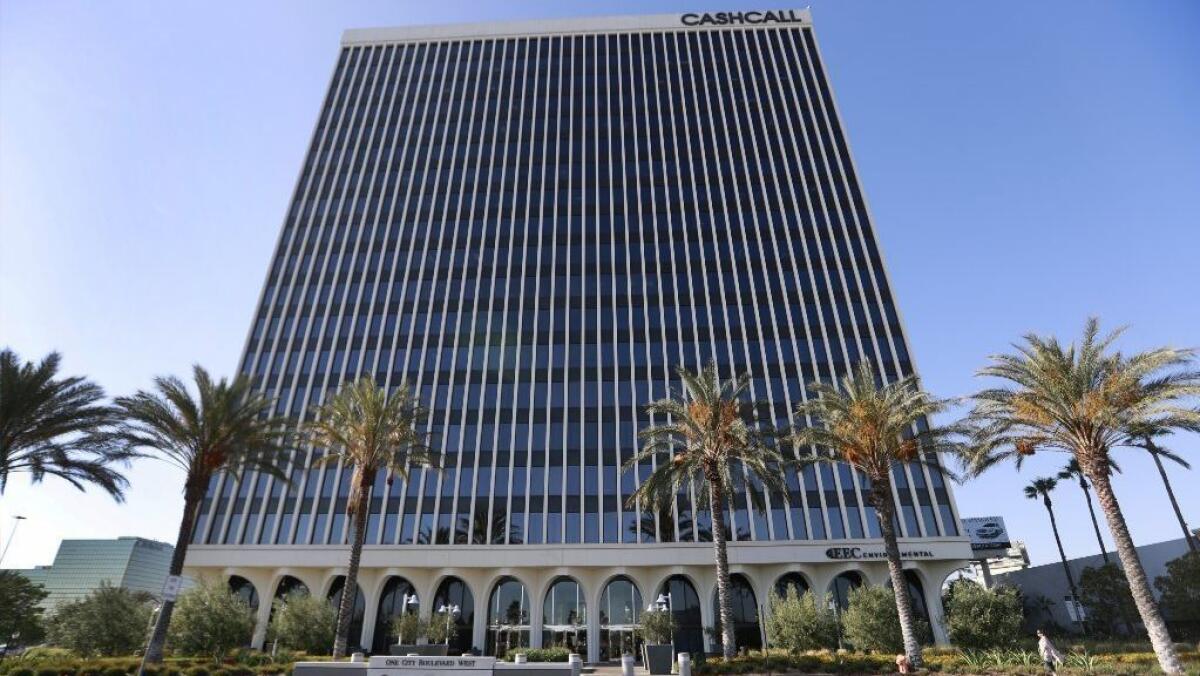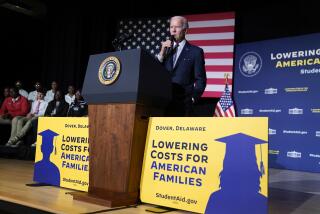Editorial: The state Supreme Court adds a little clarity on high-interest loans, but not enough

The California Supreme Court struck what seemed like an important blow for consumers this week, unanimously declaring that the rates on some consumer loans can be so burdensome and so onerous that they are illegal; lenders, the court said, are not free to impose whatever interest rates and terms they please on desperate borrowers, but must stick within limits.
Yet the ruling provided no clarity at all on how to distinguish between a loan that’s merely burdensome and one that’s illegal.
That’s a vitally important dividing line, yet state lawmakers have been stubbornly unwilling to draw it.
California used to impose tough limits on the interest rates charged on “small dollar” loans, or installment loans of $2,500 to $10,000. In fact, until the mid-1980s, the state’s interest rate limits tightened as the loan amount rose. But in a deregulatory push in the mid-1980s, lawmakers removed the interest rate caps on loans of less than $300 and more than $2,500, arguing that the market — backed up by federal regulations on federally chartered banks — provided all the protection that consumers needed.
That may well have been true before broadband became ubiquitous and online lending by companies other than banks exploded. In a way, the deregulation worked as advertised, leading to far more credit being extended to borrowers in the state. Small-dollar lending has become a huge business; in 2017, almost 1.5 million loans worth $37.2 billion were made, the state Department of Business Oversight reported.
The ruling provided no clarity at all on how to distinguish between a loan that’s merely burdensome and one that’s illegal.
Yet it’s come at an unexpectedly high cost. Here’s a jaw-dropping data point: In 2016, 17 of the state’s most prolific small-dollar lenders charged almost all of their customers interest rates of 100% or more.
The one protection legislators added when they removed the interest-rate caps in 1985 was a ban on “unconscionable” loans. Citing that ban, two borrowers who’d gotten loans from online lender CashCall with interest rates of 96% or more sued the company in federal court, arguing that the loans violated California’s law against unfair business practices. That law forbids companies from selling illegal products.
A U.S. District Court judge in San Francisco preemptively ruled in CashCall’s favor, buying the company’s argument that a loan not subject to interest rate caps could not be unconscionable. The 9th Circuit Court of Appeals sent the case to the state Supreme Court, though, asking whether that was the right reading of state law. And on Monday, the Supreme Court ruled that loans above $2,500 could be considered unconscionable under certain circumstances.
Notably, the court didn’t decide whether CashCall’s loan terms were illegal. Instead, it said that determining whether a loan was unconscionable would be up to the courts on a case-by-case basis. That’s because the standard is flexible, unlike an interest rate cap. “Unconscionability requires oppression or surprise,” the court held, along with “overly harsh or one-sided results.”
Enter the Fray: First takes on the news of the minute from L.A. Times Opinion »
In other words, a host of factors come into play, including how the loans are marketed, the borrower’s negotiating power and ability to understand the terms, available alternatives, and the risk faced by the lender.
That all sounds reasonable enough, but it’s also too murky for lenders and borrowers alike. The role of the state here is not only to give lenders an opportunity to meet the demand for credit, but also to protect borrowers against predatory loans that send them spiraling into a debt trap. And the terms offered for small-dollar loans, combined with the way they are marketed in low-income and minority communities, show that there’s a real need for more protection. According to a 2016 report by the National Consumer Law Center, high-interest installment lenders reported default rates of 20% to 40% or more, compared with 2% to 9% for lower interest rate loans to the same class of risky borrowers.
Even without a clear picture of what constitutes an unconscionable loan, the court’s ruling should prompt the state Department of Business Oversight to review the marketing practices, disclosures and terms imposed by high-interest small dollar lenders in California. In particular, it should help the department crack down on lenders and their agents steering people seeking loans of less than $2,500 into unregulated loans above that amount. Shifting someone from a loan with a maximum interest rate of 25% into a loan charging 135% seems to define unconscionability.
Meanwhile, the Legislature should revisit proposals such as Assembly Bill 2500 by Assemblyman Ash Kalra (D-San Jose), which would set clear interest rate caps on loans of $2,500 to $10,000, as 28 other states have done. Lenders shouldn’t have to guess what amounts to an unconscionable loan, and neither should consumers.
Follow the Opinion section on Twitter @latimesopinionand Facebook
More to Read
A cure for the common opinion
Get thought-provoking perspectives with our weekly newsletter.
You may occasionally receive promotional content from the Los Angeles Times.










